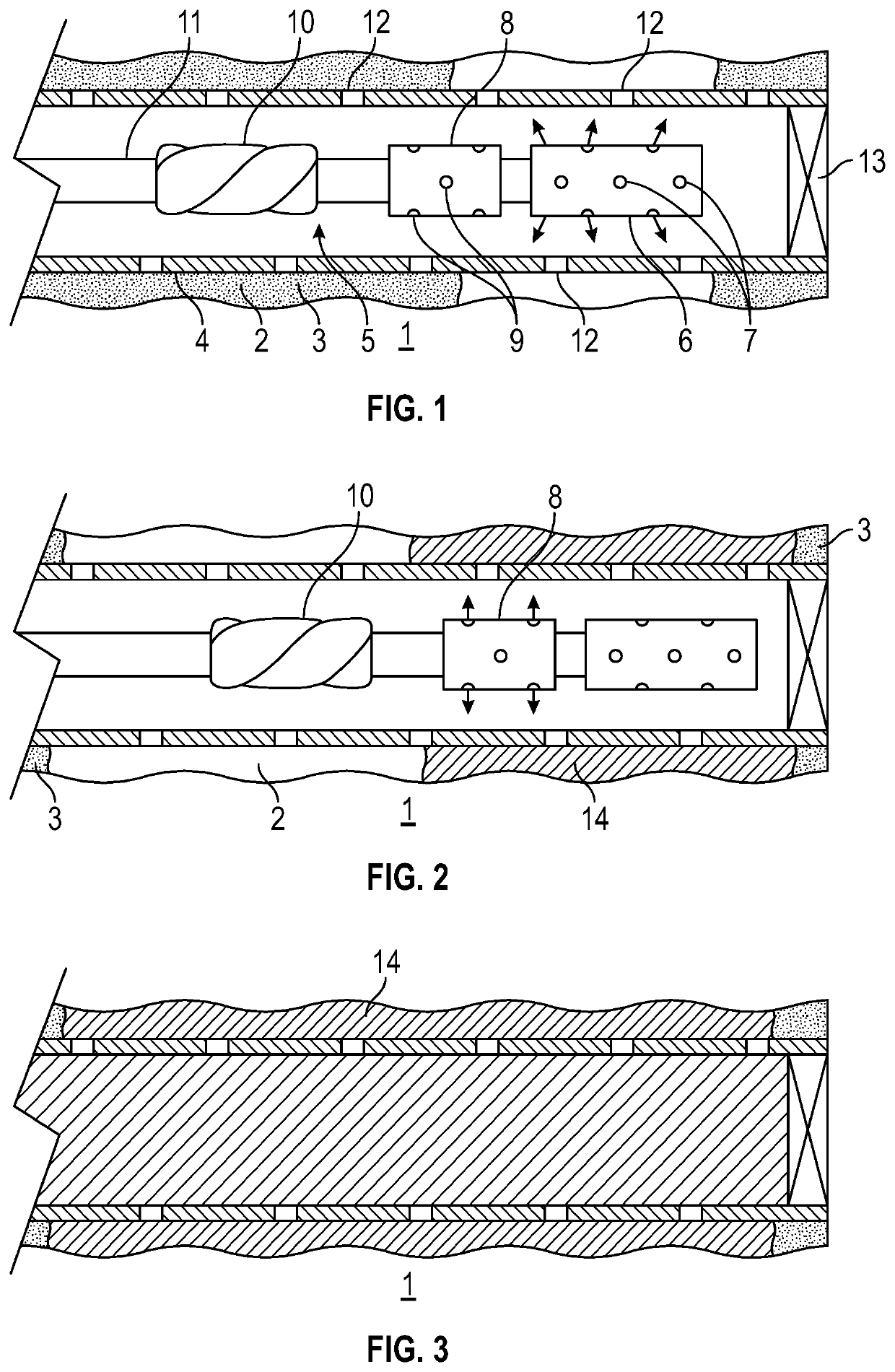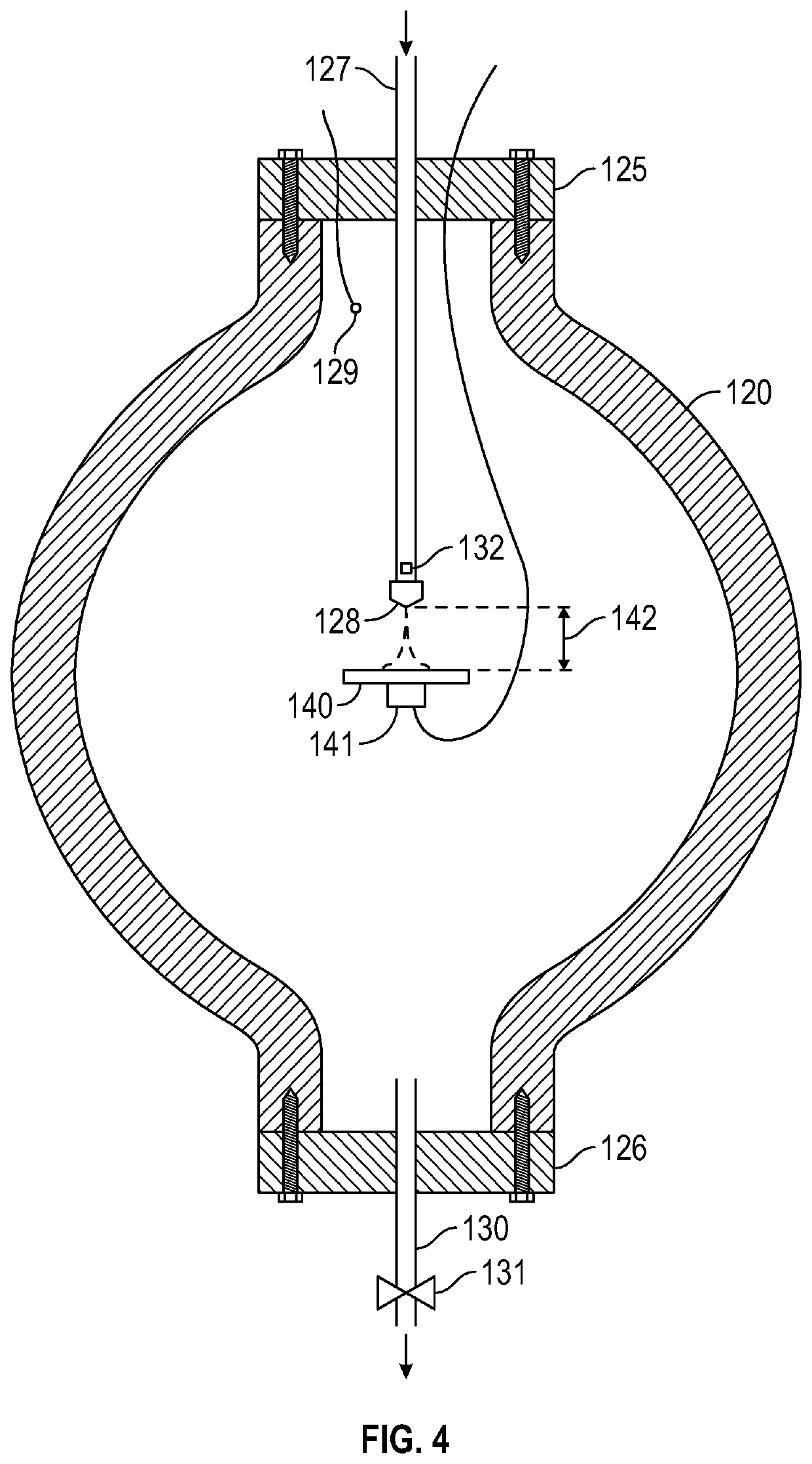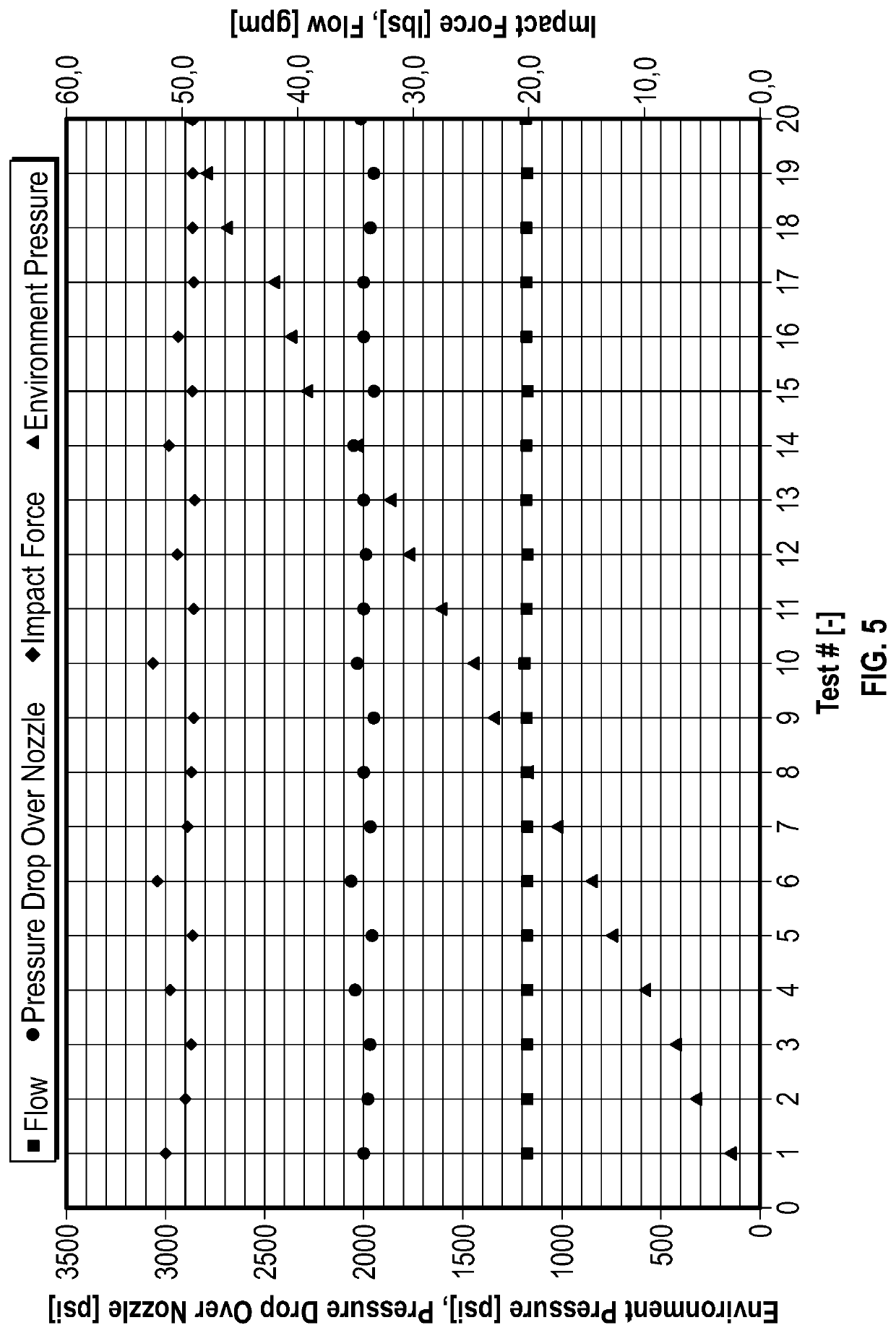Behind casing wash and cement
- Summary
- Abstract
- Description
- Claims
- Application Information
AI Technical Summary
Benefits of technology
Problems solved by technology
Method used
Image
Examples
example 1
[0076]Referring now to FIG. 4, a number of tests were conducted using a high pressure chamber 120, capable of withstanding internal hydrostatic pressure in excess of 10,000 psi. The chamber was filled with water (to simulate the fluid in the casing and in the well annulus).
[0077]The pressure chamber 120 was fitted with upper and lower end plates 125, 126. Passing through the upper end plate 125 was a conduit 127 terminating in a nozzle 128 inside the pressure chamber 120. Facing the nozzle 128 and spaced from it was a plate 140. The distance between the plate 140 and nozzle 128 can be varied remotely from outside the chamber, by means not shown. The plate was mounted on a force / deflection sensor 141 which was located on the opposite side of the plate to the side facing the nozzle 128.
[0078]A pressure sensor 129, with associated lead passing through the upper end plate 125 to display or monitoring apparatus (not shown), was arranged to detect the ambient hydrostatic pressure in the c...
example 2
[0084]The pressure tank, nozzle and plate arrangement of Example 1 was modelled in computational fluid dynamics (CFD) software and then tests run in the CFD software. The purpose of these tests was principally to compare the results to determine if the CFD testing accurately reflected the physical tests in the pressure tank.
[0085]The CFD modelling in this and other examples below employed software marketed under the trade name “Fluent” by Ansys Inc. Key results from these CFD tests are shown in Table 1 below, side by side with equivalent results from the physical tank test of Example 1. The correlation is good. The term “clearance” in this table refers to the distance between the nozzle tip and the pressure plate.
TABLE 1FlowForce onNozzleRatePlate (lbs)SizeClearance(gpm)TestsCFD 4 / 32″ 4.2″2049.249.430113.5111.316″2023.622.03055.148.9 6 / 32″16″3028.922.53738.833.1
example 3
[0086]Further CFD work was then performed using a much more detailed CFD model which included a wash tool with more than one nozzle located within a perforated casing directing jets outwardly into an annulus. One foot long sections of industry standard 9⅝ inch diameter casing were modelled with either 18 or 20 perforations of either 1 inch or 1.4 inch diameter. For this test, the annulus fluid was modelled as a viscous medium including solid debris, similar to the expected contents of a real annulus. Although the content of an annulus can vary widely, the modelled annulus content was considered to be almost a “worst case”, unless the content of the annulus was compacted solid material which would not behave like a fluid at all. In the latter event it would be expected that this compacted volume would become part of the final cemented seal.
[0087]The CFD model was a realizable k-e turbulence model in the Fluent software, using a scalable wall function with appropriate Y+ value to capt...
PUM
 Login to View More
Login to View More Abstract
Description
Claims
Application Information
 Login to View More
Login to View More - R&D
- Intellectual Property
- Life Sciences
- Materials
- Tech Scout
- Unparalleled Data Quality
- Higher Quality Content
- 60% Fewer Hallucinations
Browse by: Latest US Patents, China's latest patents, Technical Efficacy Thesaurus, Application Domain, Technology Topic, Popular Technical Reports.
© 2025 PatSnap. All rights reserved.Legal|Privacy policy|Modern Slavery Act Transparency Statement|Sitemap|About US| Contact US: help@patsnap.com



